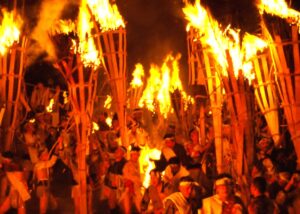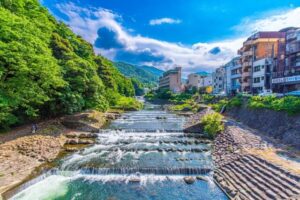What's the Difference Between Shrines and Temples in Japan?
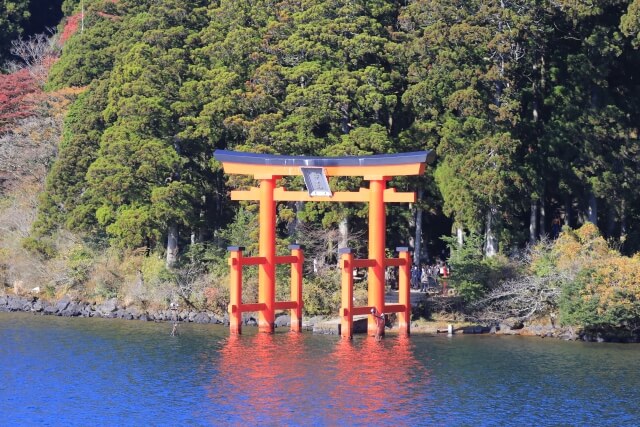
Japan has a rich history as evidenced by shrines and temples predating thousands of years.
Such places of worship are found in many regions across Japan, such as Kyoto.
Yet, there are distinctive and contrasting features between shrines and temples that you ought to know before visiting them.
Read on to find out!
- Definitions of a “Shrine” and a “Temple”
- Origins of Shintoism and Buddhism
- Differences in Appearances
- Differences in Mannerisms
- The People at Shrines and Temples
- Differences in the Location of the Enshrined Object
- Summary
1. Definitions of a “Shrine” and a “Temple”
Shrines
A shrine is a place where Shinto deities are worshipped, as many people in Japan believe in Shintoism.
Temples
A temple refers to a Buddhist place of worship, where Buddhist statues are enshrined.
2. Origins of Shintoism and Buddhism
Shinto believe in Shintoism
Shinto is the traditional faith of Japan from ancient times.
In Shintoism, it is believed that gods dwell in everything around us.
These gods are called yaoyorozu no kami, or eight million gods.
This concept of yaoyorozu no kami denotes the belief that all things in existence, such as the mountains, rocks, trees, waterfalls, buildings, everything.
This is because since ancient times, the Japanese have always lived in sync with nature, such as agriculture and fishing.
Simultaneously, they have been exposed to natural disasters such as typhoons and drought, which made them feel a divine connection to natural phenomena.
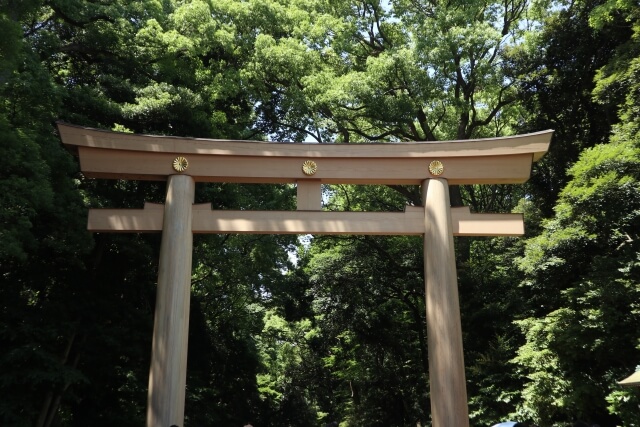
Temples follow Buddhism
Buddhism arrived in Japan more than a thousand years ago from China and Korea, focused on the teachings of Buddha.
It came to Japan in 525, when the monarch of the Korean kingdom of Baekje sent a mission to Japan with gifts, which include an image of the Buddha.
Interestingly, the dominant approach in Japan for many centuries was Shinto-Buddhist syncretism.
This was where Shinto shrines were built on the compounds of Buddhist temples, and vice versa.
Yet, after the Meiji Restoration, the government issued regulations to differentiate Shinto from Buddhism which remains to this day.
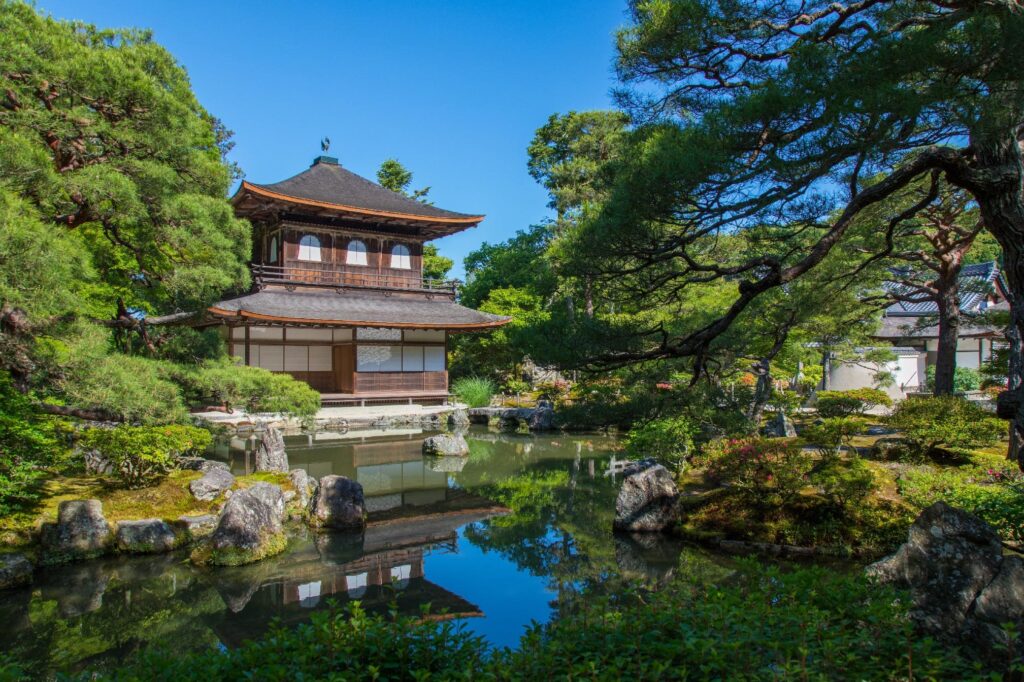
3. Differences in Appearances
How can we differentiate between a shrine and a temple based on looks?
The easiest way to tell them apart is by 1). looking at the entrance and 2). observing whether it has komainu (lion-like guardians) or Nio (Two Guardian Kings).
Appearance of Shrines
Shrines generally have a torii gate at the entrance which marks the boundary between the secular world and the godly world.

Appearance of Temples
Temples have sanmon gates, the most important gate of a Japanese Zen Buddhist temple.

Statues at Shrines
Shrines are flanked by stone statues of komainu, with the exception of Inari shrines which have foxes instead.
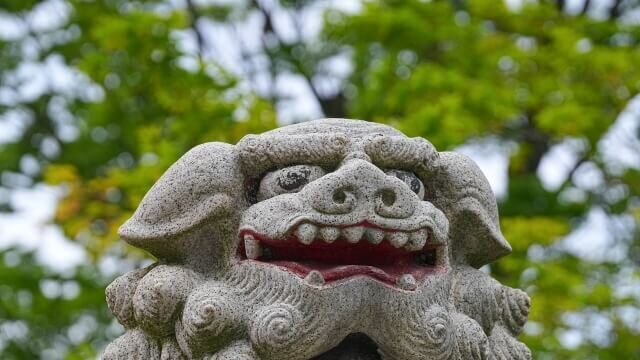
Statues at Temples
Temples are guarded by Nio, namely Agyo and Ungyo, who symbolises the beginning and the end of the world.
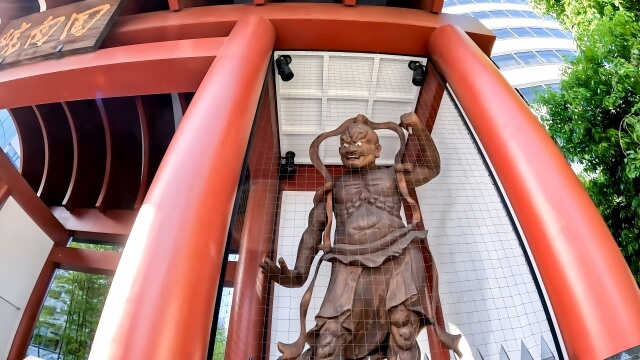
4. Differences in Mannerisms (and how you pray)
The way you pray at shrines and temples are slightly different.
Praying at Shrines
In shrines, after ringing the bell that hangs from above, money offerings are made to the offertory box.
Visitors should then "bow twice, clap twice, and bow once again" before making prayers.
Praying at Temples
In temples, hands are quietly pressed together in front of your chest without clapping.
Temples also have incense which can be used to make sincere prayers.
Note that you should extinguish the flame by waving your hand, rather than blowing it out with your mouth.
You may also see visitors fanning themselves with the smoke, as it is also believed to have healing powers.
5. The People at Shrines and Temples
The people who work at shrines and temples have different jobs.
People at Shrines
People who work at shrines are called shinshoku or kannushi, whose main work is to perform rituals and prayers held at shrines and are responsible for the maintenance of the shrine.
There are also supplementary priestesses called miko.
They are usually young women in white kimonos and red pleated hakama.
They are generally seen selling omamori or talismans.
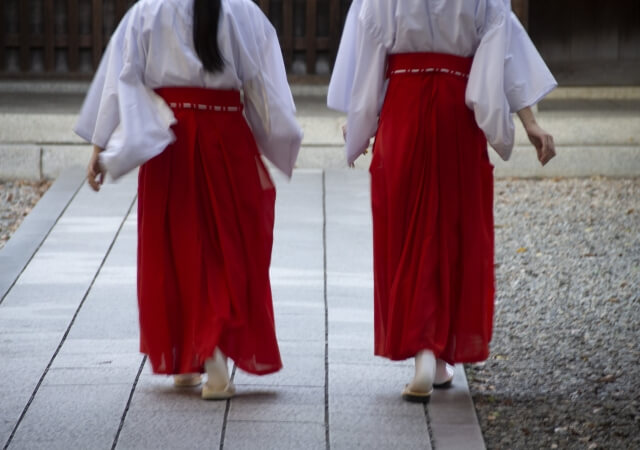
People at Temples
People who work at temples are called monks or obosan.
They devote themselves to training, managing graves, reciting sutras at Buddhist memorial masses, and managing the temple compounds.
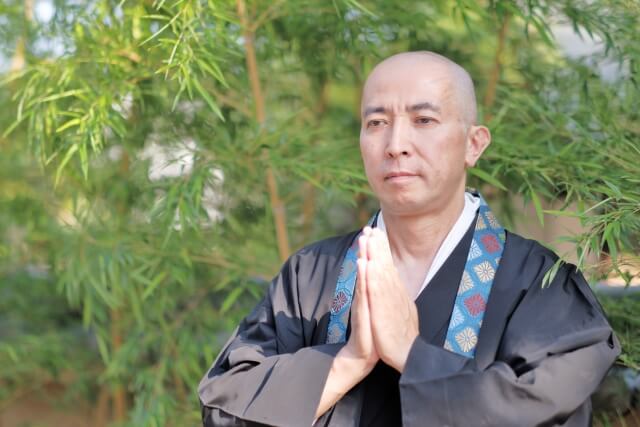
6. Differences in the Location of the Enshrined Object
Both shrines and temples have a special space for sacred objects, but the locations are often different.
The location of the sacred object in Shrines
In shrines the go-shintai (sacred spirit of the god) is enshrined in a place that cannot be seen from the outside.
Generally, the object of worship is stored deep within the shrine and so regular worshippers are not allowed to see it with their eyes.
The furthest building from the torii gate is the honden (the main shrine), and this is where the goshintai is stored.
The location of the sacred object in Temples
In temples the Buddhist statues are worshipped, and these are open to the public's eye.
You can see Buddha statues whenever you visit temples.
7. Summary
All in all, the main differences are:
- Shrines follow Shintoism, while temples believe in Buddhism
- The origin of Shintoism lies in Japan, whereas Buddhism comes China and Korea
- The entrance of the shrines is embodied by torii gates with komainu, and temples have sanmon gates with Nio
- To make prayers, it is customary to bow twice, clap twice, bow once at shrines, while it is not necessary to clap hands at temples, but to simply press them together
- The people who work at shrines and temples are different from each other
- The location of the enshrined object is usually hidden in shrines, whilst it is open to the public in temples
For more information on shrines and temples, refer to our Ninja Blog articles below!
9 Must-Visit Shrines in Kyoto
10 Must-Visit Temples in Kyoto
What are we?
We run Ninja Experience Cafe in Tokyo, Kyoto and Osaka, Japan.
Here you can immerse yourself in Japanese culture through experiencing ninja training.
Both adults and children are welcome to try their hand at defeating the ninja master inside the cafe.
The cafe is an indoor interactive zone, so it can be enjoyed even on rainy days.
If you are thinking "I want to be a real ninja too!” or interested in becoming a real ninja, please visit us.
Reservations can be made here.
Unauthorized copying and replication of the contents of this site, text and images are strictly prohibited.

